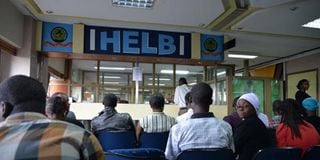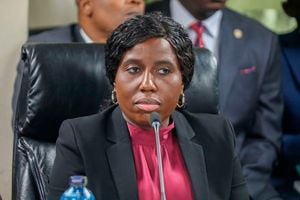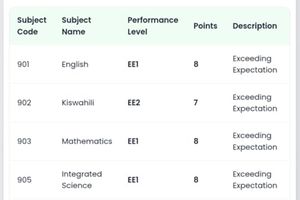
Students apply for Helb loans in Nairobi in September 2014. Over 69,000 students who are set to join university have not applied for funding from the government.
Over 69,000 students who are set to join university have not applied for funding from the government, with only seven days left before the application deadline as universities start opening for the 2024/25 academic year.
This is after the Ministry of Education extended the application deadline on Monday by 10 days after failing to attract enough applications. The principal secretary of Higher Education, Beatrice Inyangala said out of the 153,275 placed to universities, only 83,922 had applied for funding by yesterday, leaving out 83,922 others even as the government faces serious funding challenges for higher education.
The number is an increase from the 79,038 who had applied for loans and scholarships by Monday under the financing model introduced last year. Dr Inyangala said that about 122,000 students are expected to apply, based on previous trends.
The model scrapped off the automatic tuition grants to all students and new students now have to apply for a scholarship and tuition loan as well as another loan for upkeep. The allocation to individual students is determined based on the level of their needs. The students will also apply before the beginning of every academic year.
Scholarship
The scholarship component is awarded by the Universities Fund (UF) while the Higher Education Loans Board (Helb) awards the tuition and upkeep loans. The funding model has drawn mixed reactions from various stakeholders, especially on the classification of the students in the various bands.
Documents tabled in Parliament by the Ministry of Education indicate that it has a funding gap for the model that will affect thousands of students. Out of the Sh13.5 billion required for higher education scholarships, only Sh4.3 billion is available in the available budget. According to the ministry, this can only support 48,841 students (32 per cent of the applicants), leaving 73,793 students without any scholarship funding.
“On the other hand, the resource requirement for [student] loans is Sh13.8 against an available budget of Sh1.4 which will support 12,307 students only (10 per cent of first-year students),” the document reads.
The MoE also raised a red flag that in the 2024 – 2025 financial year, there is a deficit for continuing students under the differentiated unit cost (DUC). Sh23 billion (38.75 per cent) has been allocated whereas the ideal funding should be at 80 per cent of the DUC.
“We propose to fund DUC at 50 per cent, which amounts to Sh29 billion to enable universities to reduce the pending bills amounting to Sh84 billion,” the submission reads.
Last year, 18,000 students did not apply for the funding. Dr Inyangala blamed the non-issuance of national identity cards and misinformation about the model for the situation. She said that underage students as well as those who have not been issued with IDs can still apply for funding.
Over 9,000 students appealed their allocations last year but only 5,000 were considered for re-categorisation. Dr Inyangala said that some students do not provide accurate information and the UF and Helb have to rely on other government agencies like the Kenya Revenue Authority to establish the family incomes.
Loan burden
“When students declare their family’s income, it’s really strange. As a nation, we’ve to think through issues of integrity. Our children are declaring between Sh5,000 and Sh30,000. No student is indicating that their parents earn even Sh100,000, so we’ve fine-tuned the means of validating the income that families earn,” the PS said.
On Monday, the ministry held a virtual meeting with student leaders to sensitise them on the funding model. Several students expressed reservations with the model especially on the loan burden.
“We’ll not be very diplomatic about it. We don’t want those loans where students will have to pay huge loans upon graduation,” said Tarus Vincent from Moi University.
Another meeting involving student leaders, MoE and managements of universities is scheduled for August 9 2024 (tomorrow) at the Kenya School of Government.
The model places students in five bands depending on their family income as well as other factors like the size of families and the children in school. Band 1 has students whose monthly income does not exceed Sh5,995 while Band 2 ranges from Sh5,995 to Sh23,670.
Students from families with monthly incomes between Sh23,671 and Sh70,000 are placed in Band 3 while those between Sh70,001 and Sh119,999 are in Band 4. Band 5 and which receives the least funding in terms of scholarship but high on loans is for students whose families earn above Sh200,000.
“Household income refers to the total earnings received by members of a household. It includes wages, salary, pension, proceeds from farming, business, and investments among others,” the document before the National Assembly reads.










